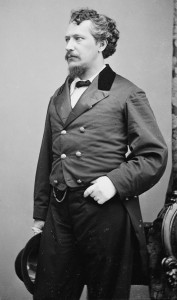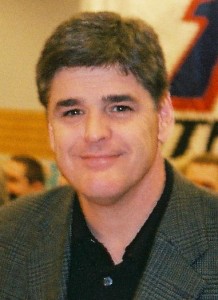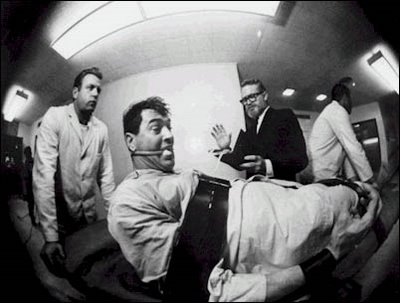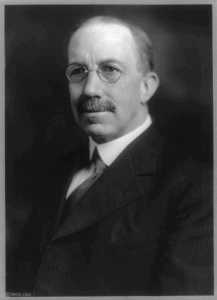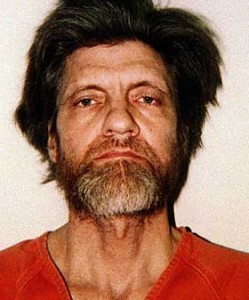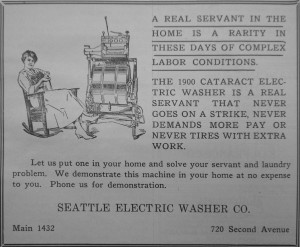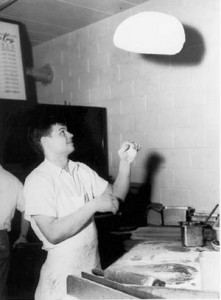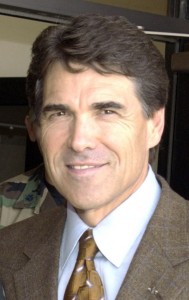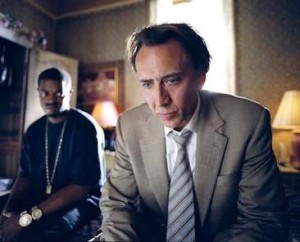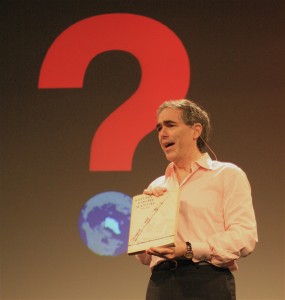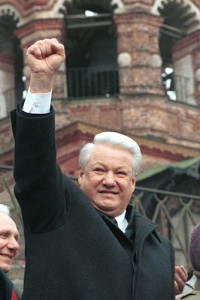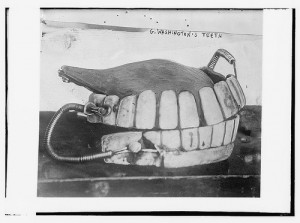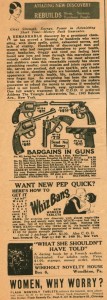The Dallas Cowboys played this past NFL season in a fancy-shmancy new billion-dollar home, so in April it was time for old Texas Stadium to bite the dust. Planned implosions of old decommissioned buildings are always oddly thrilling to watch, but Immersion Media has given the viewing experience a brilliant now twist. The video above has a tool embedded that allows you to watch Texas Stadium implode from the inside from any angle you like and change angles as the implosion unfolds. It’s glorious wreckage in panoramic form. Thank you to the legendary boing boing for pointing me in the video’s direction.
You are currently browsing the yearly archive for 2010.

The Urban Planet Pavilion at the Expo. The event's theme is environmentally sustainable cities, which seems dubious since the Expo features the largest LED video screen ever created. (Image by Triad Berlin.)
Costing billions of dollars, the Shanghai World Expo 2010 aims to reintroduce China’s most populous city to the international stage. The Expo kicked off last week and its exorbitance makes the Olympics seem like a high school track meet. While the cost of the Expo itself is $4.2 billion, the nation has poured more than $50 billion into infrastructure improvements for the city. An excerpt from the Associated Press story about the opening of the Expo:
“Friday night’s star-studded indoor festivities included action star Jackie Chan, Japanese singer Shinji Tanimura, concert pianist Lang Lang and opera star Andrea Bocelli, among 2,300 performers. Afterward, guests moved outside for a lights, music and fireworks jubilee that lit up the drab banks of the Huangpu river with 1,200 searchlights, powerful lasers and mobile fountains.

Jackie Chan: Please join us at Shanghai World Expo 2010--and remember to rent "The Spy Next Door" on DVD!
The normally tea-colored waters glowed with 6,000 red and orange 1.6-foot (0.5-meter) LED balls and lights from a parade of flag boats representing nations participating in the Expo.
The Expo is expected to draw 70 million people over six months to pavilions from almost 200 nations designed to reflect the urban sustainability theme of ‘Better City, Better Life.’
China is splashing out 28.6 billion yuan ($4.2 billion) on the Expo itself, and many billions more on other improvements for this city of 20 million people. Freshly painted buildings, new highways, subway lines and airport terminals–all proclaim the country’s newfound status as a modern, increasingly affluent industrial giant.
‘The government will spend whatever money it takes. For the leadership, it’s worthwhile,’ said Zheng Yongnian, director of the East Asian Institute of the National University of Singapore.”
More World’s Fair posts:
- Great Exhibition of London in 1851.
- Home movies of NYC’s 1939 World’s Fair.
- Official Guide of NYC’s 1939 World’s Fair.
- Official Guide of NYC’s 1964 World’s Fair.
Tags: Andrea Bocelli, Jackie Chan, Lang Lang, Shinji Tanimura
- Decoders: Sean Hannity and Sarah Palin and Glenn Beck.
- Strange, Small & Forgotten Films: Seconds (1966).
- Old Print Articles: Circus freak keeps swallowing metal objects (1904) and George Francis Train loses his mind (1888).
- The greatest TV commercial ever?
- The best magazines in the history of publishing.
- Dan Okrent recalls the Prohibition Era.
- Tommy from Customer Service discusses the census.
- Michael Herr remembers Stanley Kubrick’s formative years.
- Recently Posted on NYC’s Craigslist: Stolen puggle sold for heroin and turtle tank owner will ruin your life.
- New DVD: Bad Lieutenant–Port of Call New Orleans.

"From a scared minor leaguer to winner of the Cy Young Award--baseball's highest honor for a pitcher--almost overnight!"
Got my bent, bony fingers on a copy of Tom Seaver’s 1973 softcover book, “Baseball is my life.” Co-authored by sportswriter Steve Jacobson, this 127-page Scholastic Books publication is graced with a few cool photos and was aimed at kids.
“Tom Terrific” looks back on his childhood and how he went from Little League to the pinnacle of the big leagues. He definitely plays the humble hero for kids in the book, though I haven’t heard a whole lot of flattering things over the years about Seaver’s personality. At any rate, he was treated like a Beatle after he led the Miracle Mets to the 1969 World Series and could have published all the books he wanted. In the following excerpt, Seaver recalls the culture shock he experienced after joining the Marine Corps Reserve when he was a 17-year-old American Legion pitcher:
“I hated being in the Marine Corps. But I don’t think anything was worse than the first day at the Marine Corps Recruit Depot in San Diego. I’ve compared memories with other fellows in the service. It just wasn’t my outfit or me; it was everybody and every outfit. It was the first day: anger, frustration, tears, fear–all wrapped together in the unknown.

Seaver on the mound during the 1969 World Series. If baseball hadn't panned out, he planned to become a dentist.
It began with Russ Scheidt, an old, friend, and myself getting on a bus that went to San Diego. When we were five or six years old, Russ and I used to play catch. He’d stand on one side of the street and toss the ball to me on the other side. Neither of us was allowed to cross the street then. He was the kid who told me, when I showed up for my first Little League game, that I had my socks on backwards.
They picked us up at the bus station, got us onto a truck, and they told us to sit down and not talk. It wasn’t bad. Then when we drove through the gates it was like going into a new world.
The door opened and the screaming began. You always know that sticks and stones will break your bones and names will never harm you, but this was something else. When they screamed, we had to jump and move, and we never jumped high enough or moved fast enough. Get out of the bus, stand in line, and hurry up–screaming, screaming with all the foul language that goes with it. I heard words I could never write on a printed page.”
Tags: Russ Scheidt, Steve Jacobson, Tom Seaver
The great kottke.org pointed me in the direction of a TV ad that genius filmmaker Errol Morris has identified as the best commercial he’s ever seen. It’s a local spot for Alabama proprietor Robert Lee’s Cullman Liquidation Center, which sells used mobile homes. It was created by Rhett & Link, the North Carolina-based multimedia comedy duo comprised of Rhett McLaughlin and Link Neal. I don’t know how many double-wides the commercial has moved off the lot, but it certainly is attention-grabbing. And the family members seem ready-made for their own reality show.
Tags: Errol Morris, Link Neal, Rhett McLaughlin, Robert Lee
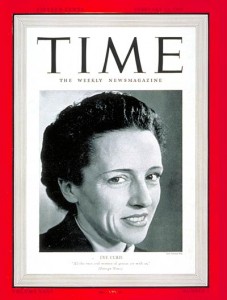
Writer Ève Curie (daughter of Madame Curie) graced the cover of “Time” in 1940, as she did her part to fight the scourge of Nazism. Ève did tons of work for UNICEF and lived to 102.
As the magazine industry founders in the face of a media paradigm shift, Molly Lambert and Alex Carnevale at This Recording have published a smart piece called “15 Best Print Magazine Runs of All Time.” They pinpoint spans of time when a magazine thrived creatively and transcended all the other rags on the rack.
It’s a really great list, though I have some nits to pick. The heyday of Premiere isn’t represented at all. And some of the time spans seem stingy (Life wasn’t great just from 1940-1965 but until the end of its original run in 1972; Mad was amazing for a lot longer than 1958-1963). But I quibble. Below is an example of some of the entries.
*****
12. Might (1991-1995)
Dave Eggers’s San Francisco magazine was known for rambling essays on provocative topics. Some have cited their “Are Black People Cooler Than White People?” as the first recorded LOL. They also did an issue that was entirely about cheese, and let David Foster Wallace make the argument that AIDS was going to make sexual pursuit better and more rewarding by making it more difficult. If you write about all the things you find interesting it is possible that somebody else will also be interested, or better yet become interested just because it’s written well.
*****
6. Creem (1971-1980)
Cooler than Rolling Stone, Creem featured articles from a dream roster of counterculture writers like Lester Bangs, Greil Marcus, Nick Tosches, Richard Meltzer, Patti Smith, and Cameron Crowe, all of whom made or embossed their names here (plus countless other staffers who did all the work). The original arrogant confrontational blog, indier than thou when it still meant something, Creem articles expose all other music criticism as falsity. Our favorite kind of snobs, Creem touted the MC5 and ABBA equally.
*****
2. Time (1939-1945)
Before Time became the absolute mess it is now, two men made this venerable institution the most well-written compendium of critical thought ever to enter the public sphere at the time. Whittaker Chambers joined Time in 1939; soon enough he and James Agee were the primary composers of the arts section of the magazine. Chambers ascended to the magazine’s editorial board, and kept writing. It only got better from there.
Tags: Alex Carnevale, Dave Eggers, David Foster Wallace, Ève Curie, Madame Curie, Molly Lambert
Although he’s largely forgotten now, George Francis Train was one of the most famous people in the world in the late 1800s. The inspiration for Jules Verne’s Around the World in Eighty Days, Train was a businessman, politician, lecturer, author, world traveler and all-around larger-than-life character. He was also increasingly batshit crazy in his later life.
Train spent a lot of time during his dotage wandering around Madison Square Park, handing out dimes and refusing to talk to anyone but children and animals. Here’s an excerpt from a June 24, 1888 issue of Brooklyn Daily Eagle, when “Citizen Train” had gone off the rails:
“I overheard a curious conversation in the barroom of the Hoffman House this week between our returned crank, George Francis Train, and a gentleman who had known him as a boy and who was familiar enough with him to still address him by his Christian name. The Sage of Madison Square strode in looking cool, handsome and as sunburned as ever, arrayed from top to toe in snow white duck, and as usual carrying his straw hat in his hand, while his buttonhole was adorned with cornflowers. He called for milk and vichy, the new Summer drink, with the invention of which that other crank, Ruskin, is credited, and while absorbing it was approached by his aforementioned acquaintance, who extended his hand and said genially, ‘Good morning, George. Glad to see you in the city again.’
Before his angry flight to New Brunswick and his somewhat sheepish return, the crank never answered any remark made to him by adults, declaring they took from him ‘Psycho-force.’ But now he considered himself sufficiently strong to withstand the drain of speaking to them and replied ‘Good Morning’ at the same time putting his hands behind his back, and adding, ‘You must excuse me, but I can’t shake hands with you’

Perhaps inspired by his surname, Train was instrumental in the formation of the Union Pacific Railroad.
‘Why not?’ demanded the other.
‘Because,’ answered the crank, ‘for fifteen years I have never allowed myself to touch man or woman. I should impart a portion of my psychic forces to them and I can not afford to do it. Only lately have I been able even to speak to them.’
‘Oh, bother such nonsense,’ cried his friend impatiently. ‘There’s not the slightest use of the type of talk with me, George. I’ve known you too long. I hoped you would finally have gotten over this absurd craze of yours. It’s a shame that a man with your talents should have wasted your life as you have done.’
Train looked annoyed and uncomfortable and retorted, ‘Why, what have you done yourself to have made your life worth living?’
‘If nothing else,’ replied his friend, ‘I have raised to manhood two noble, manly sons, and that in itself is enough.’
‘Oh, you think so,’ sneered Train. ‘Well let me tell you what I have done. I have stored up in the last fifteen years enough psychic force to enable me to live for centuries, and it’s growing all the time, so that long after you and your two sons are dead I shall be here, passing through the streets people will fall dead before me, so great and irresistible will be my power.’
Five minutes after he was talking with the utmost clearness and shrewdness, concerning some investments in real estate in St. Paul and no one could have believed him the lunatic of fifteen seconds previous.”
Tags: George Francis Train, Jules Verne
Sean Hannity: Now if protesters actually sat down to read the [Arizona immigration] law they would find that racial profiling is explicitly prohibited.
Decoder: Seems odd then that so many ultraconservatives–Karl Rove among them–think the law is unconstitutional.
Sarah Palin: And shame on the lamestream media again for turning this (Arizona immigration law) into something that it is not.
Decoder: Like when I tried to turn health-care reform into an argument about “death panels.”
Sarah Palin: I wish that our President would stand so strong and proud under one Constitution reminding America that we are all one America. We are all in this together. And instead of dividing, according to demographic or race or gender.
Decoder: I spent most of the Presidential campaign trying to appeal to what I called “the real America,” which was incredibly divisive.
Sarah Palin: We rattle them when we talk to these liberal elites about what it is that most Americans believe in.
Decoder: Oh, and that sounds pretty divisive, too.
Sean Hannity: You know, look, I watched with fascination and almost bewilderment, the attacks on the Tea Party Movement. Look, I’ve experienced a lot of this throughout my career. I — look, I’m on the air four hours a day, I can take it but to attack citizens that are just expressing that they think government is too big, our debt is out of control, and we’re on the wrong path on national security, seems bewildering to me.
Decoder: I am bewildered because I’m ignoring the racist overtones, the violence-laced language and the people comparing Obama to Hitler.
Sarah Palin: Yes, the President is looking for cover to allow him to break yet another campaign promise that he would not increase taxes.
Decoder: Although he actually seems to have stuck to all of his campaign promises so far. And my hero, Ronald Reagan, who explicitly promised “no new taxes,” raised them six times.
Sarah Palin: I’m sick and tired of hearing about Obama and the White House coming out with yet another crisis that has to be fixed by government, sticking it to the people and taking more of what we earn and produce.
Decoder: Middle-class taxes are at near-historic lows.
Sarah Palin: They’re, you know, community organizers. They’ve been spending other people’s money for so long that I think a lot of the free-enterprise principles that so many of us believe in, it’s all foreign to them.
Decoder: I will continue to mock people who help poor communities. I want them to feel a great sense of shame for trying to bring some hope to downtrodden neighborhoods. They deserve abuse from a highly paid celebrity loudmouth like me.
More Decoders:
- Glenn Beck
- Michele Bachmann
- Sarah Palin
- Jon Voight
- Rep. Michele Bachmann
- Newt Gingrich
- Rudy Giuliani
- Michael Steele
- Dan Quayle
- Rep. Michele Bachmann
- Sarah Palin
- Mitt Romney
- Rep. John Boehner
- Rep. Michele Bachmann
- Rep. Steve King
- Rick Santorum
- Karl Rove
- Eric Massa
- Glenn Beck
- Jay Leno
- Tom DeLay
- Gov. David Paterson
- Tiger Woods
- Dick Cheney
- Mahmoud Ahmadinejad
Tags: Sarah Palin, Sean Hannity
Despite bombing during its initial 1966 release, John Frankenheimer’s sci-fi psychodrama Seconds is something of a minor classic, telling the story of a suburbanite undergoing a curious cure for the mid-life crisis.
John Randolph plays Arthur Hamilton, a respectable banker who lives a life of quiet desperation with his passionless marriage and humdrum job. His youth gone and his existential angst ever-present, Hamilton is driven to an extreme solution–pay a clandestine corporation big bucks to fake his death and reinvent him (via plastic surgery and any other means necessary) as a handsome bohemian artist (now played by Rock Hudson). But what if the artsy life and casual sex he wanted isn’t what he really needed?
As Seconds careers toward its genre-appropriate chilling conclusion, the film’s underlying question is more chilling still: What if it isn’t poor life choices but a poverty deep within ourselves preventing us from attaining happiness?•
I interviewed Dan Okrent some years ago when he was the embattled Public Editor at the New York Times and found him to be intelligent, keenly self-aware and a mordant wit. Okrent has just published a new book, Last Call: The Rise and Fall of Prohibition. I haven’t gotten my bony hands on a copy yet, but I just read an excellent excerpt in Smithsonian. Here’s a passage from Okrent about that insane and fascinating period and a forgotten historical figure who had great influence upon it:
“Wayne Wheeler was a small man, 5-foot-6 or 7. Wire-rimmed glasses, a tidy mustache, eyes that crinkled at the corners when he ventured one of the tight little smiles that were his usual reaction to the obloquy of his opponents—even at the peak of his power in the 1920s, he looked more like a clerk in an insurance office than a man who, in the description of the militantly wet Cincinnati Enquirer, ‘made great men his puppets.’ On his slight frame he wore a suit, a waistcoat and, his followers believed, the fate of the Republic.
Born on a farm near Youngstown, Ohio, in 1869, he was effectively born anew in 1893, when he found himself in a Congregational church in Oberlin, Ohio, listening to a temperance lecture delivered by the Rev. Howard Hyde Russell, a former lawyer who had recently founded an organization called the Anti-Saloon League (ASL). Wheeler had put himself through Oberlin College by working as a waiter, janitor, teacher and salesman. Now, after joining Russell in prayer, he signed on as one of the first full-time employees of the ASL, which he would turn into the most effective political pressure group the country had yet known.
It was, in fact, Wheeler who coined the term ‘pressure group.’ When he teamed up with Russell in 1893, the temperance movement that had begun to manifest itself in the 1820s had hundreds of thousands of adherents but diffuse and ineffectual leadership. The most visible anti-alcohol leader, Frances Willard of the Woman’s Christian Temperance Union (WCTU), had diluted her organization’s message by embracing a score of other issues, ranging from government ownership of utilities to vegetarianism. The nascent Prohibition Party had added forest conservation and post office policy to its anti-liquor platform. But Russell, with Wheeler by his side, declared the ASL interested in one thing only: the abolition of alcohol from American life.”
Tags: Dan Okrent, Wayne Wheeler
Chillingly telling or heavy-handed and selective fearmongering? You’ll have to decide for yourself over at Nick Carr’s always provocative Rough Type site.
Carr has posted three cautionary quotes that have a lot in common; the difference is two of them are from respected AI thinkers and one was written by the Unabomber, Theodore Kaczynski. Check out Kaczynski’s quote below and click through to Carr’s post to see how others have echoed him (unintentionally) in years since.
1995: “[As] machines become more and more intelligent, people will let machines make more of their decisions for them, simply because machine-made decisions will bring better results than man-made ones. Eventually a stage may be reached at which the decisions necessary to keep the system running will be so complex that human beings will be incapable of making them intelligently. At that stage the machines will be in effective control. People won’t be able to just turn the machines off, because they will be so dependent on them that turning them off would amount to suicide.”–Theodore Kaczynski
Tags: Nicholas Carr, Theodore Kaczynski

Kubrick photographed himself in the late 1940s with the help of a mirror, back when he was working for "Look" magazine.
I tend to divide people into two categories: Those who realize what an incredible genius Stanley Kubrick was, and other people I don’t like as much. The great website longform.org linked to Michael Herr’s excellent 1999 Vanity Fair piece (simply titled “Kubrick“) about his friend and collaborator, It was written right after the director’s death. Below are a few excerpts about Kubrick’s childhood and early career.
*****
Stanley hadn’t really been Bar Mitzvahed. He was barely making it in school; he couldn’t do junior-high English, let alone Hebrew, and besides, Dr. and Mrs. Kubrick weren’t very religious, and anyway, Stanley didn’t want to. He was not what anybody would have called well rounded. From the day he entered grade school in 1934, his attendance record had been a mysterious tissue of serial and sustained absences, his discipline nonexistent or at least nonapparent, his grades shocking. He’d received Unsatisfactory on “Works and Plays Well with Others,” “Respects Rights of Others,” and, inevitably, “Personality.” He did all right in physics, but he graduated from high school with a 70 average, and college was out of the question. At 17 he was already working as a freelance photographer for Look magazine, and he joined the staff, and he played a lot of chess, and read a lot of books, and otherwise arranged for his own higher education, as all smart people do.
*****
It’s fair only as far as it goes; just as he was multidisciplined, he was variously obsessive, and not fastidious about picking up information, and not afraid of whatever the information might be. Nobody who really thinks he’s smarter than everyone else could ask as many questions as he always did. He was beating the patzers in the park, working for Lookmagazine, sometimes using a series of still photos to tell a story, sometimes taking pictures of people like Dwight Eisenhower and George Grosz, Montgomery Clift, Frank Sinatra and Joe DiMaggio (and, I’m sure, keeping his eyes and ears open), reading 10 or 20 books a week, and trying to see every movie ever made. There was definitely such a thing as a bad movie, but there was no movie not worth seeing. As a kid he’d been part of the neighborhood multitude that poured ritually, communally, in and out of Loew’s Paradise and the RKO Fordham two or three times a week, and now he haunted the Museum of Modern Art and the few foreign-film revival houses, the very underground Cinema 16, and the triple-feature houses along 42nd Street.
*****
Reportedly he was already careless, even reckless, in his appearance, mixing his plaids in wild shirt, jacket and necktie combinations never seen on the street before, disreputable trousers, way-out accidental hairdos. He started infiltrating what- ever film facilities were in the city in those days, hanging around cutting rooms, labs, equipment stores, asking questions: How do you do that? and What would happen if you did this instead? and How much do you think it would cost if … ? He was jazz-mad, and went to the clubs, and a Yankees fan, so he went to the ball games too, all of this in New York in the late 40s and early 50s, a smart, spacey, wide-awake kid like that, it’s no wonder he was such a hipster, a 40s-bred, 50s-minted, tough-minded, existential, highly evolved classic hipster. His view and his temperament were much closer to Lenny Bruce’s than to any other director’s, and this was not merely a recurring aspect of his. He had lots of modes and aspects, but Stanley was a hipster all the time.
More Film posts:
- New DVD: Bad Lieutenant: Port of Call New Orleans.
- Strange, Small & Forgotten Films: Electra Glide in Blue. (1973)
- New DVD: Beeswax.
- Strange, Small & Forgotten Films: Prime Cut. (1972)
- Excerpted: 1985 Spin article, “RIP,” recalls the time Rip Torn smashed Norman Mailer over the head with a hammer.
Tags: Michael Herr, Stanley Kubrick
Unlike pesky human laborers who expect to receive a living wage and don’t take kindly to 18-hour workdays, these reliable machines from Seattle Electric Washer Co. didn’t get uppity and go on strike. The company exploited fears associated with the rise of labor unions for this 1920 advertisement that promised subservience from their “servants.” An excerpt from the copy:
“A real servant in the home is a rarity in these days of complex labor conditions. The 1900 Cataract Electric Washer is a real servant that never goes on strike, never demands more pay or never tires with extra work.
Let us put one in your home and solve your servant and laundry problem. We demonstrate this machine in your home at no expense to you. Phone us for demonstration.”
I came across this interesting Washington Monthly article entitled “Pie in the Sky” by Mariah Blake, which chronicles Domino’s Pizza founder Tom Monghan’s self-defeating attempt to build the Ave Maria School of Law.
It’s always fascinating when the hubris and habits that allow people to amass great wealth prove to be their undoing. An excerpt about Monaghan’s controlling nature and propensity to throw around large sums of money:
“The key to Domino’s growth was a tightly controlled franchise system. When a new store opened, headquarters would send a truck stocked with everything from pizza ovens to forks and aprons. Store managers worked from a thick operations manual, known as ‘the Bible,’ which dictated every aspect of operations, down to the smallest detail. Monaghan also kept a tight rein on his employees: store workers were barred from sitting down during their shifts, and executives were expected to uproot their lives and move across the country on Monaghan’s whim. At headquarters, female staffers had to wear skirts or dresses that fell below the knees—pants were strictly forbidden.
As Monaghan’s business grew, so did his appetite for spending. He bought a Gulfstream jet, a Sikorsky S-76 helicopter, and a fleet of cars—among them the Packard that had ferried Franklin Roosevelt to his 1933 inauguration, and a handmade Bugatti Royale. (The latter cost him $8 million, the most ever paid for a classic car.) He also began buying up Frank Lloyd Wright homes, and assembled the world’s largest collection of Wright furniture. But his most famous purchase was the Detroit Tigers, which he bought in 1983. When the team won the World Series the following year, Monaghan had his private helicopter ferry hundreds of Domino’s pizzas to Tiger Stadium.
Even during his prodigal years, Monaghan never lost sight of his Catholic roots. And beginning in the mid-1980s, he started delving more deeply into his faith, and embracing conservative Catholic causes. Then, in 1989, at the suggestion of a Catholic scholar friend, he read a passage from the C. S. Lewis classic Mere Christianity that railed against pride as ‘the essential vice, the utmost evil.’ It dawned on Monaghan that his hunger for success and flashy belongings was pride in its purest form. He immediately swore what he called a ‘millionaire’s vow of poverty’ and began shedding his possessions. Finally, in 1998, he sold Domino’s for an estimated $1 billion and announced that he was retiring from the pizza business so he could devote his time and money to Catholic education. ‘I want to die broke,’ he declared.”
Tags: Mariah Blake, Tom Monaghan
Glenn Beck: Do you believe our Constitution was divinely inspired?
Decoder: Oh, you don’t believe that? You think it was written by brilliant but flawed men? That if it was divinely inspired it wouldn’t have allowed for slavery and it wouldn’t have reduced women to second-class citizens?
Glenn Beck: If God is with us, who can possibly stand against us? The answer is no one.
Decoder: But maybe God isn’t with me, in particular. Maybe God has reason to be mad at me. According to Salon, I’m the jackass who mocked a woman’s miscarriage on live radio. I like to blame my poor behavior on my former coke addiction, but maybe I’m just a cruel, cynical prick who wants to collect money and satisfy my massive ego.
Glenn Beck: We must remember who we are. We must remember what brought us here. We must remember what protected us. We must remember these rights do not belong to us–they come from God.
Decoder: I have trouble remembering things because I was a cokehead for many years and my brain is fried.
Glenn Beck: I have no thought of what God has in store for these people, our children, our grandchildren. He just questions you to stand in place and that is our job–to stand where he wants us to stand.
Decoder: But what if he wants us to stand in the river? You know, the one by the sewage plant. That would suck.
Texas Governor Rick Perry: If you care about America, if you care about taking this country back, you find you a Tea Party. Get involved. The Tea Party is an army I’m proud to be in.
Decoder: I really, really want to be President and I think that somehow pandering to the Tea Party will help. It’s another wrong bet in a long career of wrong bets.
Texas State Representative Leo Berman: I believe that Barack Obama is God’s punishment on us today.
Decoder: There is no bigger punishment from God for a racist like me than our country having a brilliant African-American guy as President. I liked the country a lot better before it was a meritocracy.
More Decoders:
- Michele Bachmann
- Sarah Palin
- Jon Voight
- Rep. Michele Bachmann
- Newt Gingrich
- Rudy Giuliani
- Michael Steele
- Dan Quayle
- Rep. Michele Bachmann
- Sarah Palin
- Mitt Romney
- Rep. John Boehner
- Rep. Michele Bachmann
- Rep. Steve King
- Rick Santorum
- Karl Rove
- Eric Massa
- Glenn Beck
- Jay Leno
- Tom DeLay
- Gov. David Paterson
- Tiger Woods
- Dick Cheney
- Mahmoud Ahmadinejad
Tags: Glenn Beck, Leo Berman, Rick Perry
Nicolas Cage at his most overwrought has always seemed like a dead man who’s too restless to lie down, hoping that flailing hyperactivity will somehow force oxygen back into his lungs. He’s built for a necropolis and Martin Scorsese used that quality in Cage for Bringing Out the Dead. Werner Herzog has likewise tapped into that vibe in this second but non-sequel Bad Lieutenant film, which has the actor stumbling, stealing and snorting his way through New Orleans in the wake of Katrina.
The Herzog and Cage pairing was always meant to be; the director’s eccentric, impressionistic vision is a perfect match for the wild-eyed actor who is almost doing an impression of himself. Cage plays Terence McDonagh, a Big Easy cop with a hooker girlfriend (Eva Mendes), a raft of addictions and a gambling problem, whose redemption–if it’s to arrive at all–is going to have come more from luck than effort. He’s ostensibly investigating a big murder case, but it’s just backdrop for extreme misbehavior and devastating guilt.
In one scene, a wasted, spectral McDonagh hides in a corner of a room with a battery-powered razor, feverishly trying to prevent an encroaching beard. But before long, it will be five o’clock and the shadow will return. (Available via Netflix and other outlets.)
Tags: Nicolas Cage, Werner Herzog

An example of a puggle but not the one described in the Craigslist ad. This dog may have both of his nuts.
Stolen Puggle *reward* (Bronx Park E.)
I left a post a week ago about a lost a puggle name Peanut Butter that my mother may have sold for drugs. It is confirmed that my mother and her boyfriend did sell him for heroin. I am doing everything I can to find him, and I’m just posting again because I NEED all the help I can get. Peanut Butter isn’t microchipped but he has a nametag with my number on it as well as his rabies vaccination tag from Whitestone Animal Hospital. He has a license but unfortunately it was taken off when he was stolen.
Peanut Butter is a puggle who looks MOSTLY pug, he has a curly tail, well built, tan, pug face, around 29 pounds and neutered. He only had one testicle, though he is neutered, what remains is still one sac. He is hyper and though weary of new people, he warms up quickly and can be very friendly. His breathing is very loud, and you can hear him coming a mile away. He is somewhere in the Bronx. He was last seen at Bronx Park East and Mace Ave.
If you see anyone with him and I mean ANYONE. please call the police and call me. Please try to remember cross streets, location, landmarks, and a description of who he was seen with. I have a generous award for anyone who can bring my dog back! Below are pictures of my dog as well as pics of my mom and her boyfriend. If you see Peanut Butter with my mom and her boyfriend, please I ask that you still call the police. Do not talk to them or ask them questions, all they will do is LIE. Please if anyone can help it will be greatly appreciated!
Jay Walker is best known as the guy who created Priceline, but he’s really more interesting for his personal obsessions than for his business ventures. Walker’s poured a lot of his Internet wealth into creating the Library of Human Imagination, a mind-blowing private collection in his Connecticut home that is the realization of his catholic tastes in historical and contemporary artifacts.
The three-story 3,600-square-foot building was the subject of a really fun piece in Wired in 2008. That article provided a tour of some of the highlights of Walker’s overwhelming inventory: a Gutenberg Bible, a Sputnik satellite, a field tool kit for Civil War surgeons, the napkin on which FDR outlined his plan to win WWII, a 300,000,000-year-old fossil, meteorite fragments, the chandelier from the James Bond film Die Another Day, an Apple II motherboard signed by Steve Wozniak, the first 16th-century maps that included North and South America, etc.
Walker gave a TED talk (also in 2008), playing show-and-tell with some of his treasures. In talking about creativity, he echoed what neuroscientists have been telling us fo some time: “Once we shape the brain in a new way, it never returns to its original shape.”
Tags: Jay Walker
John Fasel must have been one hell of a bad tailor, because the Williamsburg resident found it necessary to supplement his income performing as a freak who ingested metallic junk in low-brow museums, sideshows and saloons. And he wasn’t a faker who employed sleight of hand–Fasel absolutely chowed down on actual nails, pocket-watch chains, keys, pins, rings, knives, coins, etc.
The “Human Ostrich” was forced in January 1900 to cease the sideshow life and change his diet after doctors performed emergency surgery and removed the hardware store in his belly. But it isn’t easy to quit the glamour of show biz, and one August evening Fasel let a group of young men in a tavern goad him into drinking beers laced with coins and four-inch nails, resulting in the Ostrich ending up in a Brooklyn hospital in critical condition.
The Brooklyn Daily Eagle ran at least four stories about Fasel, which is surprising, since I believe the paper only ran two stories about all of World War I (“Holy Crap, Everyone’s Fighting!” and “Wow, That Was A Bitch”). The New York Times also ran a couple of stories about the idiocy in August 1900, including one called, “Junk Eater Critically Ill.”
The Daily Eagle reported on his miraculous recovery a few days later in “Human Ostrich Recovering,” mocking Fasel with the line: “He is now able to partake of raw shingle nails and other light nourishment.” The Brooklyn paper ran a subsequent story lauding Fasel for not being a phony like other sideshow freaks.
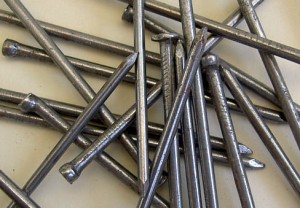
"...the extraordinary amount of tin tacks, scrap iron, pen knives, and miscellaneous nails which he swallowed one night last week."
But it was the New York Times four years later that seemed to have the final word when Fasel yet again fell off the wagon. An excerpt from the paper’s April 13, 1904 article, “Human Ostrich Dines Too Fast on Hardware“:
“The proudest man in Williamsburg today is undoubtedly John Fasel of 246 Varet Street, who is going around showing his friends an X-ray photograph which brings about in bold relief the extraordinary amount of tin tacks, scrap iron, pen knives, and miscellaneous nails which he swallowed one night last week, and which the doctors are now planning to remove.
Fasel used to be a professional ‘ostrich,’ but four years ago he found it necessary to call a halt on his metallic diet. At that time he was operated on by doctors at St. John’s Hospital, Brooklyn, and still with pride the ‘human ostrich’ recounts the list of junk taken from him on the operating table.
Fasel went on the plain food wagon and remained there until one night last week, when the old appetite for something heavy and solid made him break his pledge. It was at a ball of the White Association of Brooklyn. There Fasel saw another ‘human ostrich’ making a quick lunch of some dog-chains. The ex-ostrich felt a craving right away, and issued a challenge. His friends cheered vociferously, and the ex-ostrich mounted the platform.
The ravenous way in which he quickly disposed of all the knives on the table and the broken up water decanter made his rival stare.”
Tags: John Fasel
- Watch a demonstration of a bullet train that picks up passengers without ever stopping.
- Decoder: Michele Bachmann’s response to Bill Clinton’s criticism.
- Old Print Article: Hunchback lover has throat cut. (1877)
- Featured Video: Gary Kildall, the man who could have been Bill Gates.
- Strange, Small & Forgotten Films: Electra Glide in Blue. (1973)
- Novelist Edward Abbey blames hippies for ruining Yosemite. (1971)
- Hoax: The “oldest” man in America discusses 130 years of memories in Life magazine. (1972)
- The Sporting Life: The eccentric genius of exercise kingpin Arthur Jones.
- Recently Posted on NYC’s Craigslist: I need a dentist who’s not a dick.
- Miscellaneous Media: Hockey Digest. (1973)
I kid you not when I tell you that at the end of each month of Afflictor’s existence, we have had the same foreign country rack up more visits than any other: Russia. And with a week to go in April, it’s clear that Mother Russia will once again be number one. Why does this keep happening? I mean, what kind of perfume are they drinking over there? I’ve suggested in the past that perhaps it’s because many Russian writers have trouble breathing during Vladimir Putin’s reign, so maybe citizens of the country have nothing to read but Afflictor nonsense. Or maybe it’s because this website strictly prohibits funny hats, questionable sunglasses and male hustlers. Whatever it is, Afflictor Nation sends out yet another warm welcome to you, Russia!
Tags: Boris Yelstin
Information wanted for dentist (Queens)
I have severe tooth decay and want to have my teeth extracted and be fitted with dentures. Some of my teeth are broken at the gumline. I am writing because I am looking for a dentist in my neighborhood that takes my insurance, will do the extractions and fitting in a minimal amount of time and frankly wont be a dick that will lecture me and ridicule me. I live in 11367. I have Neighborhood HMO through medicaid. I need a place that isnt too far from my area. Hit me back with some information please. Thanks. Ps: Keep your comments to yourself if you are gonna be an asshole and email me stupid shit. I am simply asking for information nothing more. If you know of a good dentist that specializes in this area, or if you know of a dentist close to my area that takes this insurance than please email me with number info etc. I don’t deserve to be treated like an asshole because I want to better myself by getting something like this done.
The 1920s must have been the best decade ever. I mean outside of financial collapse, Prohibition and violent labor strife. In 1926, right below an ad for discount guns ($6.45 for a blue steel automatic), was a come-on for the no-doubt quackish Whiz Bang Pep Pills, a proto-Viagra from the fine folks at the Sani-Research Co. It truly was the guns-and-boners decade. The ad copy in full:
“Want new pep quick? Here’s how to get it.
Weak? Lost Vigor? Then send at once for Whiz Bang, the amazing new discovery with almost magic-like action. Pep and energy come back quick–you feel like a new man, full of red-blooded vim and push. Nothing like Whiz Bang–that’s why 1000s use it. No harmful drugs that form habits. Results guaranteed or money back. Send $2.00 for double strength package. Special 2 package offer, $3.00.”
More Old Print Ads:
- P.T. Barnum’s Greatest Show on Earth (1876)
- Dr. Hopkins’ Electric Hair Restorer (1868)
- Alcohol-filled novelty handguns (1926)
- Rubber party masks (1941)
- Professor Baron, famed astrologer (1863)
- Salem Witch spoon (1891)
- Panti-Legs (1961)
Chinese transportation techies have developed a train that picks up and drops off passengers without ever stopping, by having travelers enter and exit a connector car that attaches and detaches from the train’s roof. It’s really ingenious and not so scary once you view the video demonstration. Because the train doesn’t ever stop, it saves time and fuel. The only thing I don’t get is how passengers can choose what stop they’d like if they’re in a car that automatically detaches. I’ll do some more research.
Novelist Edward Abbey (The Monkey Wrench Gang) was a radical eco activist and onetime park ranger. He wasn’t exactly known for subtlety when it came to protecting nature, deriding both mainstream culture and counterculture; he possessed the rare ability to anger both conservatives and left-leaning environmentalists. Abbey was not in a sanguine mood about behavior in Yosemite National Park when he wrote this philippic for the September 3, 1971 issue of Life. An excerpt from “The Park That Caught Urban Blight“:
“For 14 years, I was a seasonal park ranger. But I quit because I found myself forced more and more into the role of a petty policeman. This year, I went to Yosemite Valley, the most troublesome of all Park Service areas, to see the park rangers in their new role as Park Fuzz, to see Smokey the Bear as Smokey the Pig.
In the foothills of the Sierras, up through the old mining towns of Coulterville and Chinese Camp, the flowers were blooming–silvery supine, California poppy, paintbrush and penstemon–and the traffic was light. When I saw a sign ‘Water Ahead,’ I anticipated a drink of pure Sierra Nevada spring water, fresh from the rocks. I found the spring, but another sign beside it read ‘Water Contaminated; Unfit to Drink.’
Later, several miles beyond the park entrance I stopped at a turnout of the classic view of Yosemite Valley below. There was El Capitan, Half Dome, Sentinel Dome, Bridalveil Fall, and a blue haze above the valley floor. Wood smoke? Exhaust fumes? In nearby Cascade Creek I found my first Budweiser can in the clear snow water.
Down in the valley teen-age gypsies with sleeping bags, backpacks and ragged heads slouched along the road, thumbs out. Damn lazy city kids, I thought–let them walk. Good for them, and I spurred my widespread Pontiac right on by. Hitchhiking is illegal in national parks. Hitchhikers are poor, dirty, immoral. I was one; I should know. They steal your credit card, they leave a weird smell lingering in the back seat, they contribute nothing to the national economy.”
Tags: Edward Abbey



